50 Years Later: Remembering the Guardsmen Lost in the Rapid City Flood
Local News June 9, 2022 Staff 0
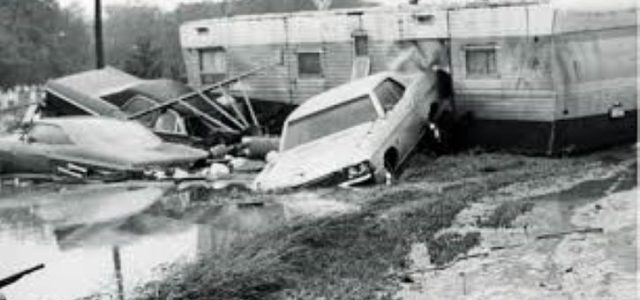
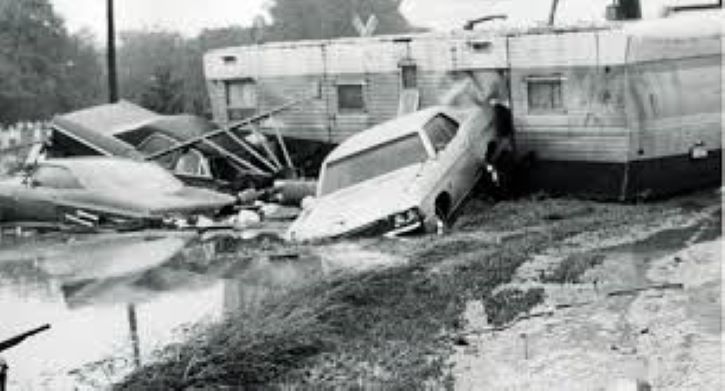
Today marks five decades since the Rapid City flood took 238 lives on June 9, 1972. Its anniversary is a grim reminder of the worst natural disaster in South Dakota history in terms of death toll. It is also a reminder of the heroes who risked their lives and those who gave their lives to rescue others. At the time, it was estimated over 1000 people were saved.
The flood struck while nearly 2000 members of the South Dakota National Guard, including the 740th Transportation Company based in Milbank, were involved in annual training exercises at Camp Rapid and nearby locations in the Black Hills. They were immediately called into action at the onset of the flood.
Three of those South Dakota guardsmen were killed. One, 26-year-old Second Lieutenant Gary Englestad, was a member of the 740th Transportation Company based in Milbank. Englestad perished along with Private First Class Freeman Phillips from Rapid City, and Myron Corbin, a member of Headquarters Battery, 2nd Battalion, 147th Field Artillery based in Webster. Englestad left behind his wife, Evelyn, and a young daughter Darcy.
What happened that fateful day was recounted by Retired Chief Warrant Officer 5 Durward (Duke) Doering. Doering received an Individual Governor’s Award for History on April 23, 2022, in Pierre. He was recognized for his excellence in the research and preservation of the history of the South Dakota National Guard. Doering became the SDNG Historian in 2011, after serving 44-years in the SDNG. Here is his account:
June 6, 1972 – On this date in SDNG history – Annual Training – Camp Rapid, Badlands and Roubaix Lake areas – Prelude to the Rapid City flood on June 9, 1972.
On June 6, 1972, there were nearly 2,000 South Dakota Army National Guard Soldiers at annual training (AT) in the Camp Rapid area. The training in 1972 began on the weekend of June 3 for 19 of the South Dakota Army National Guard units. These units were in four locations. The 147th Field Artillery’s Group Headquarters, 1st Battalion, and 2nd Battalion, along with the 216th Ordnance Company and 1085th Medical Detachment were located at the Badlands Bombing Range. This artillery range was located approximately 50 miles southwest of Rapid City off state Highway 40, now renumbered Highway 44. Two units, the 842nd Engineer Company and the 214th Engineer Company were bivouacked near Roubaix Lake, about 40 miles northwest of Rapid City in the Northern Black Hills.
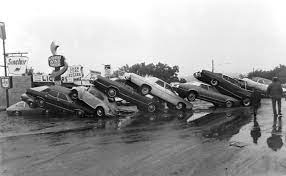
Most of the units were located on Camp Rapid. Those located at Camp Rapid were Headquarters, South Dakota Army National Guard; 129th Public Affairs Detachment; 109th Engineer Group; HHD 109th Engineer Battalion; 730th Medical Company; 665th Maintenance Company; 147th Army Band; 235th General Supply Company; 139th Transportation Battalion; 1742nd transportation Company; and the 740th Transportation Company. There was a present for duty strength of 2,004 for this annual training period, 1,907 of whom were in and around the Camp Rapid area. The 211th Engineer Company, with a present for duty strength of 97, was involved in bridge training at Camp Grafton, N.D.
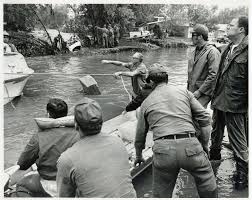
Prior to the change of Army Training Directives in 1980, units traditionally trained through the end of the duty day on Friday of the first week, (they) released the troops on pass for the weekend to return before reveille on the following Monday morning. Ninety percent of the unit members would be on pass over the weekend. A duty officer and about 10 percent of the unit strength remained on duty over the weekend to provide security of vehicles, weapons and equipment. This was the case in 1972, so on June 6 most members were planning to go home over the weekend, leaving after duty hours on June 9.
June 9, 1972 – On this date in SDNG history – Rapid City Flood of 1972: Extremely heavy rains which began in the late afternoon of June 9, 1972, caused the Sheriff of Lawrence County to notify the Adjutant General, Maj. Gen. Corning, of possible need of National Guard support if flooding in the Northern Hills continued. The call was received at approximately 6:45 p.m. Maj. Gen. Corning relayed the information to Col. Elroy (Stretch) Lemaster, deputy adjutant general, who in turn called the duty officer, Capt. Donald Huls, to alert the commanding officers at Camp Rapid of possible flood duty. Lemaster called for a briefing, to be held immediately at the Camp Rapid Emergency Operating Center (EOC). Col. Lemaster had only begun his briefing when calls for assistance started coming into State Radio, which was located in the EOC.
The first calls were from the Highway Patrol and Pennington County Sheriff’s Department to blockade Nemo Road, and assistance in rescue of a vehicle washed off the road near Cleghorn Canyon. Most Guardsmen on Camp Rapid were reporting for duty, however, more manpower was needed and the call went out over radio and television for all Guardsmen at annual training to report (to) Camp Rapid. Only 655 Guardsmen were in annual training at Camp Rapid. 1,015 artillerymen and support troops were in the Badlands some fifty miles east of Rapid City and 237 engineer troops were at Roubaix Lake west of Rapid City in the Black Hills. Units in the Badlands had just completed their first week of annual training and were given the week-end off to enjoy the Black Hills with their families. Family Day for the Artillery Group had just finished in the afternoon.
To get the call to all Guardsmen on pass was impossible. No confirmed figures are available of just how many reported in that fateful night. It was impossible to keep unit integrity as calls for assistance were answered as rapidly as men reported in. Rescue units were made up of engineers, artillerymen, transportation, maintenance, medics, aviators, and state headquarters personnel. Getting the job done was paramount. Capt. Bob Mallow, with a crew of five other Soldiers from the 235th Supply Company and six men from the 740th Transportation Company were dispatched at about 9:30 p.m. on Friday to close Nemo Road at the request of the Pennington County Sheriff.
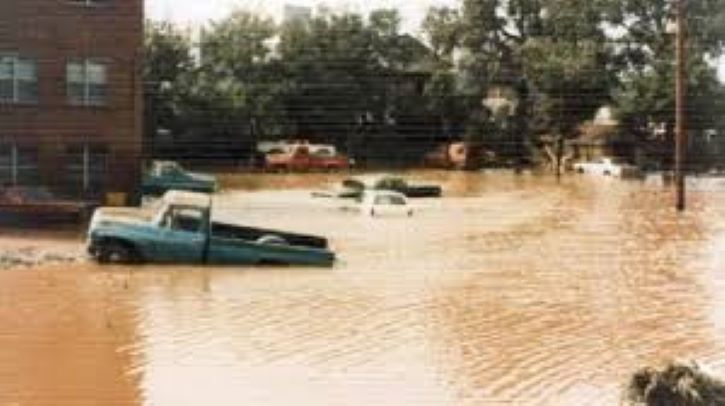
They were flagged down by a woman saying her three children were trapped on the other side of the creek. About that time a pickup truck coming down the road reported seeing a car going into the creek. The driver thought there were people in the car because the dome light had come on. The crew found the car and 2LT Gary Englestad, Pfc. Freeman Phillips, Lt. John Parke and PFC Gary Reinhold secured themselves with ropes and went into the creek. They found the car was empty. On their return, the water rose and the current got stronger, forcing the four men into a tree. In the next 20 minutes the water climbed between 15 and 20 feet. It was during the rescue missions in that area that two South Dakota National Guard Soldiers, 2nd Lt. Gary Engelstad and Pfc. Freeman Phillips lost their lives on Box Elder Creek. Mallow and the remainder of the Soldiers were isolated and could not get back to Camp Rapid until the next morning.
1st Sgt. Myron Corbin of Headquarters Battery, 2nd Battalion, 147th Field Artillery, Webster, S.D., was known to be in downtown Rapid City when the floodwaters struck and how Corbin became a victim has never been determined. Many other National Guard individuals and teams performed rescue missions throughout Rapid City and the Black Hills area. They did yeoman work and the number of lives they saved can only be told by those whose lives they did save. Rescue teams reporting back to Camp Rapid brought refugees and recovered bodies. Some estimates ran as high as 1,000 individuals saved.
Refugees were taken to the armory or local churches and given cots, blankets, and food. It was impossible to get to mortuaries to deliver bodies as the bridges over Rapid Creek were out. The lights in the entire city went out about 11:47 p.m. Fortunately, at the Camp Rapid EOC, emergency power and water were available. Prior to this, lights in the flooded area went out early in the evening which caused more danger to those attempting rescue operations. Downed wires were everywhere and fast moving debris of every description made it even more hazardous to operate. Trees, light poles, automobiles, trailer houses, and homes were moving in the flooded area at speeds up to 40 mph.
In 1973, Second Lieutenant Gary Englestad and Private First Class Freeman Phillips were posthumously awarded the Valley Forge Cross for their heroic actions. The awards were presented at the 95th General Conference of the National Guard Association of the United States in Oklahoma City.
Fourteen other South Dakota National Guard members were also awarded the Valley Forge Cross for their life-saving efforts during the Rapid City flood. They include:Major Clarence Knapp, Captain James Whitehead, Master Sergeant Manuel Torres,Second Lieutenant Michael Bowlby, Second Lieutenant John Parke, Specialist 6 Maylon Schuh Sergeant Darrell Heimes, Specialist 5 Warren Nelson, Specialist 4 Curtis Peterka, Private First Class Charles Cederburg, Sergeant Aubrey Sylvester, Specialist 5 Randall Jastram, Specialist 4 Vincent Siemonsma, and Private First Class Gary Reinhold. Torres, Bowlby, and Schuh also received Soldier’s Medals.
Photos Courtesy of: Pennington County Emergency, Rapid City Journal, Bowienewsonline












No comments so far.
Be first to leave comment below.